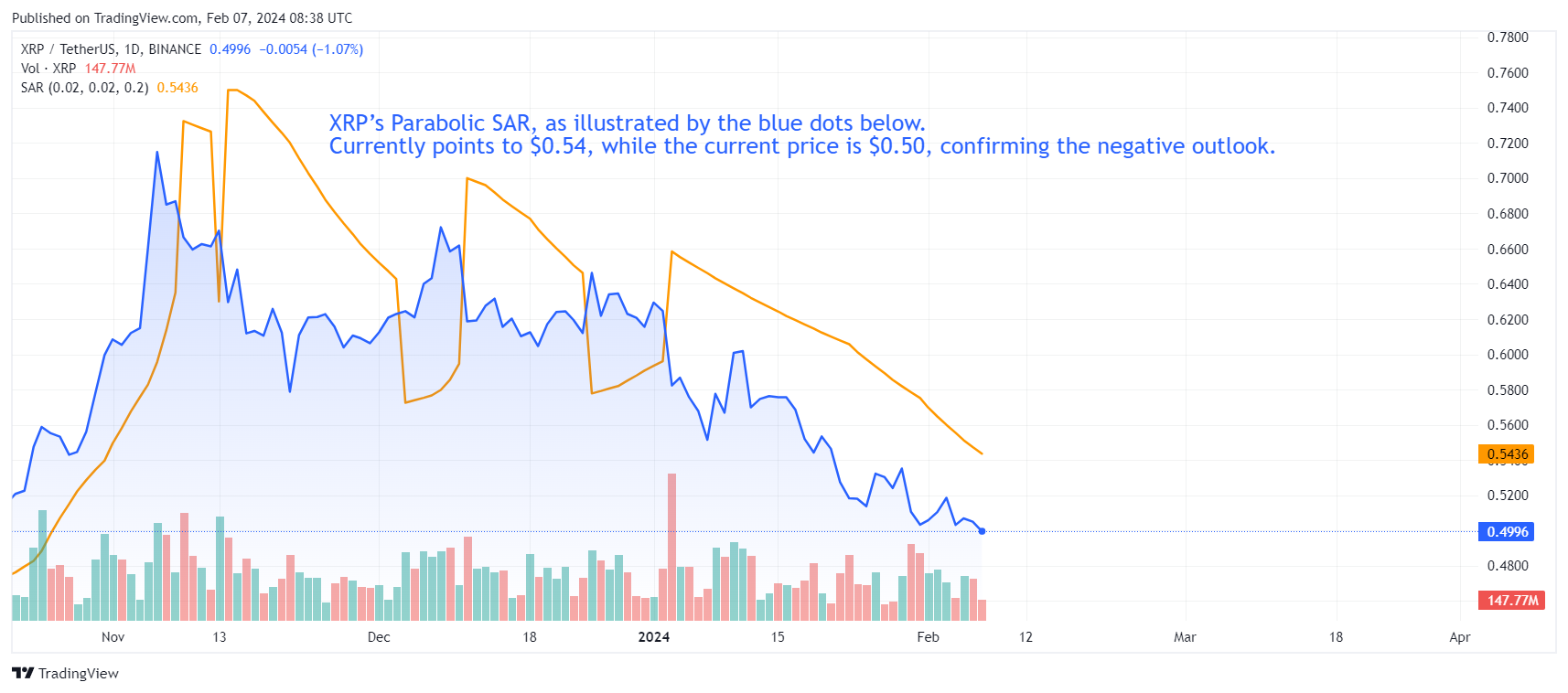- Ripple’s ongoing legal battle with the SEC over XRP sales underscores complex regulatory challenges facing cryptocurrencies.
- Investors in XRP navigate uncertainty as Ripple’s compliance with SEC document demands hints at prolonged legal proceedings.
Investors in XRP find themselves in a protracted period of anticipation as Ripple adheres to the SEC’s requisitions for document disclosures in the ongoing legal contest, with projections of further postponements due to possible escalations to superior judiciary bodies. The contention between Ripple and the SEC regarding institutional sales of XRP introduces an additional layer of intricacy to the legal fray, perpetuating a state of limbo for investors amidst this regulatory tussle.
Challenges and Projections
The constituency of XRP is entrenched in a protracted legal confrontation with the United States Securities and Exchange Commission (SEC), and the horizon for a resolution with Ripple remains indistinct. The conflict intensified recently with a judicial mandate requiring Ripple to disclose certain financial records and institutional XRP distribution agreements.
Ripple’s adherence to this mandate signifies a critical phase in the legal proceedings. However, an anticipated appeal to the Second Circuit Court of Appeals suggests an extension of the legal engagement.
At the center of the dispute is the delineation of XRP transactions, segregating retail from institutional sales. In July 2023, it was adjudicated that XRP transactions on exchange platforms do not constitute securities transactions, whereas institutional sales were identified as unauthorized securities exchanges, a determination that now significantly influences the remediation stage.
Both Ripple and the SEC seek unequivocal victories for distinct reasons
The SEC’s reluctance to acknowledge XRP transactions on exchanges as non-securities transactions is pivotal in its broader legal campaigns against platforms like Coinbase and Binance. A concession to Ripple could potentially weaken its stance in these subsequent cases.
Thus, the XRP community is braced for a lengthy wait for a definitive legal resolution. The U.S. Court of Appeals, designated to review appeals from federal courts, particularly those involving novel legal interpretations, is set to be the next venue for this ongoing legal saga.
This dispute not only impacts Ripple and its community but also has wider implications for the cryptocurrency industry, especially concerning the regulation and classification of digital assets. The resolution of this case may set important precedents for the legal handling of cryptocurrencies in the United States and potentially beyond.
Analysis of the XRP Market Amid Current Challenges
The XRP market presently confronts an array of substantial challenges, engendering bearish pressure and instigating uncertainty among investors. Recent adverse events, such as the hacking incident involving Chris Larsen, co-founder of Ripple Labs, have contributed to an overall sentiment of caution in the market. Moreover, regulatory intervention has introduced another layer of intricacy to the situation.
Over the past 10 days, there has been an uptick in open interest in XRP, hinting at a strengthening of bearish positions. This suggests a greater number of investors are betting on XRP’s price decline, potentially leading to further devaluation.

The Parabolic SAR technical indicator supports this downward trend, implying that XRP’s price could plummet towards the $0.45 level in the short term. This presents a significant challenge for investors as they would need to brace for a potential drop below the $0.50 mark. However, there still remains the possibility that proponents of XRP’s price could manage to uphold the $0.45 level and stave off an even stronger wave of selling pressure.
Conversely, surmounting resistance at $0.54 would pose a considerable challenge for those holding an optimistic view on XRP’s future. If bulls succeed in reversing the current trend and pushing the price beyond this threshold, it would signal strength and could engender a shift in market sentiment.



